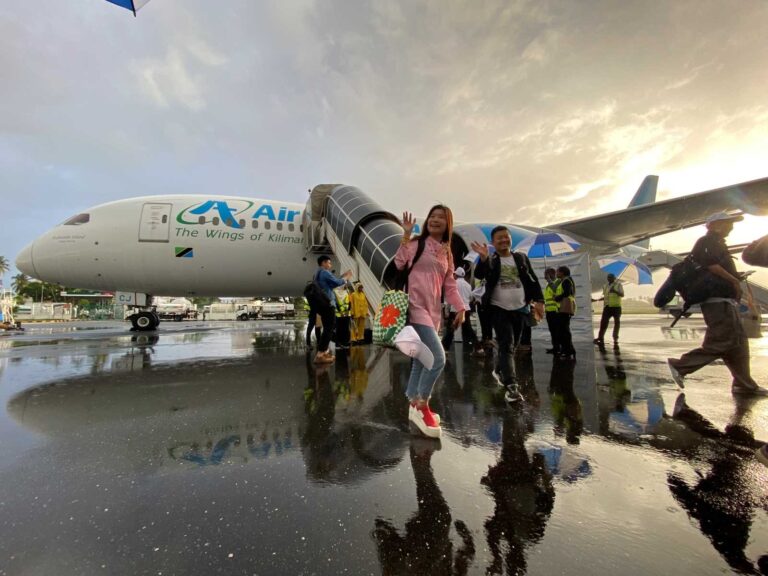The desire to travel has returned around the world. According to the latest World Tourism Indicators published by the United Nations Tourism Organization (formerly the United Nations World Tourism Organization – UNWTO), people are now traveling as much as they did before the COVID-19 pandemic. In the first quarter of 2024, international arrivals (overnight stays) worldwide reached 97% of 2019 levels. Excluding inflation, international tourism receipts in 2023 were only slightly below pre-pandemic levels.
The pandemic caused a 72% decline in international travel in 2020, with devastating effects on tourism around the world. Since then, tourism has recovered slowly and steadily. However, there are significant regional differences, with Middle Eastern countries seeing 22% more international travelers in 2023 than in 2019, while Europe, Africa and the Americas continue to experience shortfalls. The largest shortfall is in the Asia-Pacific region, with a 35% decrease compared to 2019.
Poor countries recover slowly
The UN report also shows disparities between the rich and developed world and poorer regions of the world: developed countries will record more than 90% of 2019 travel volumes in 2023, while emerging economies will only see figures of around 84%. Least developed countries will be the slowest to recover, at less than 81%, despite a number of positive examples such as Ethiopia (up 30%) and Tanzania (up 20%).
The World Economic Forum’s Travel and Tourism Development Index 2024 (TTDI) also picks up on these differences. The TTDI measures tourism development in 119 countries based on economic, political, environmental and social factors. In the TTDI rankings, high-income countries perform significantly better than low-income countries. Many low- and middle-income countries, such as Côte d’Ivoire, Tanzania and Indonesia, significantly improved their index scores compared to 2019. However, the TTDI authors note that there are still notable differences in global tourism participation levels.
There are multiple reasons for this. Many countries need further investments in improving health systems and working conditions, local infrastructure, and information and communication technology to facilitate access to international markets. The report’s authors also find that developing countries’ cultural and natural resources are underdeveloped. This is evident, for example, in the relatively low number of UNESCO World Heritage sites in sub-Saharan Africa. This lack of historical heritage makes it difficult to protect important archaeological sites and develop tourism infrastructure sustainably. Places recognized as World Heritage sites can attract tourists even in tough economic environments.
The climate crisis and other challenges
One of the biggest challenges facing the travel and tourism industry is the climate crisis.
According to a TTDI report, the tourism sector was responsible for 8% of global greenhouse gas emissions in 2019, and the United Nations Tourism Agency calculates that emissions from tourist travel could increase by 25% between 2016 and 2030. At the same time, many regions that rely on tourism are being severely affected by rising sea levels, ecosystem destruction and increased extreme weather events.
UN initiatives and tourism associations have long called for a comprehensive transformation of global tourism in line with the UN’s Sustainable Development Goals (SDGs). In the “Glasgow Declaration on Climate Action in Tourism”, many companies and institutions pledged to contribute to the achievement of the Paris climate goals in 2021. TTDI researchers found that tourists’ travel behavior is indeed changing in some areas: they are shortening travel distances and using transportation modes other than air. However, according to the report’s authors, this is not due to increased environmental awareness, but rather economic, due to factors such as global inflation and fluctuations in fossil fuel prices. In addition, there is increasing uncertainty around geopolitical conflicts.
The International Energy Agency (IEA) reports that global air travel carbon dioxide emissions, including non-tourism travel, are likely to reach about 80% of pre-pandemic levels in 2022 and surpass 2019 levels by 2025. Moreover, the return of tourists means that old issues such as overtourism and seasonality are re-emerging in many places.
During the pandemic, it was often said that we cannot go back to “business as usual”. Some regions have already taken steps to make their tourism sector environmentally and socially sustainable and more crisis-resilient. These include access restrictions and tourist taxes to ease the burden on places that are particularly under pressure. Other regions should follow suit, as the climate crisis demands swift and comprehensive action not just in tourism but in other sectors as well.
Link
United Nations Tourism: World Tourism Indicators.
https://www.unwto.org/un-tourism-world-tourism-barometer-data
World Economic Forum: Travel and Tourism Development Index.
https://www.weforum.org/publications/travel-tourism-development-index-2024/
Konstantin Auwärter is studying International Relations and Communication Sciences at the University of Erfurt. He wrote this article as part of his internship at D+C/E+Z.
euz.editor@dandc.eu

